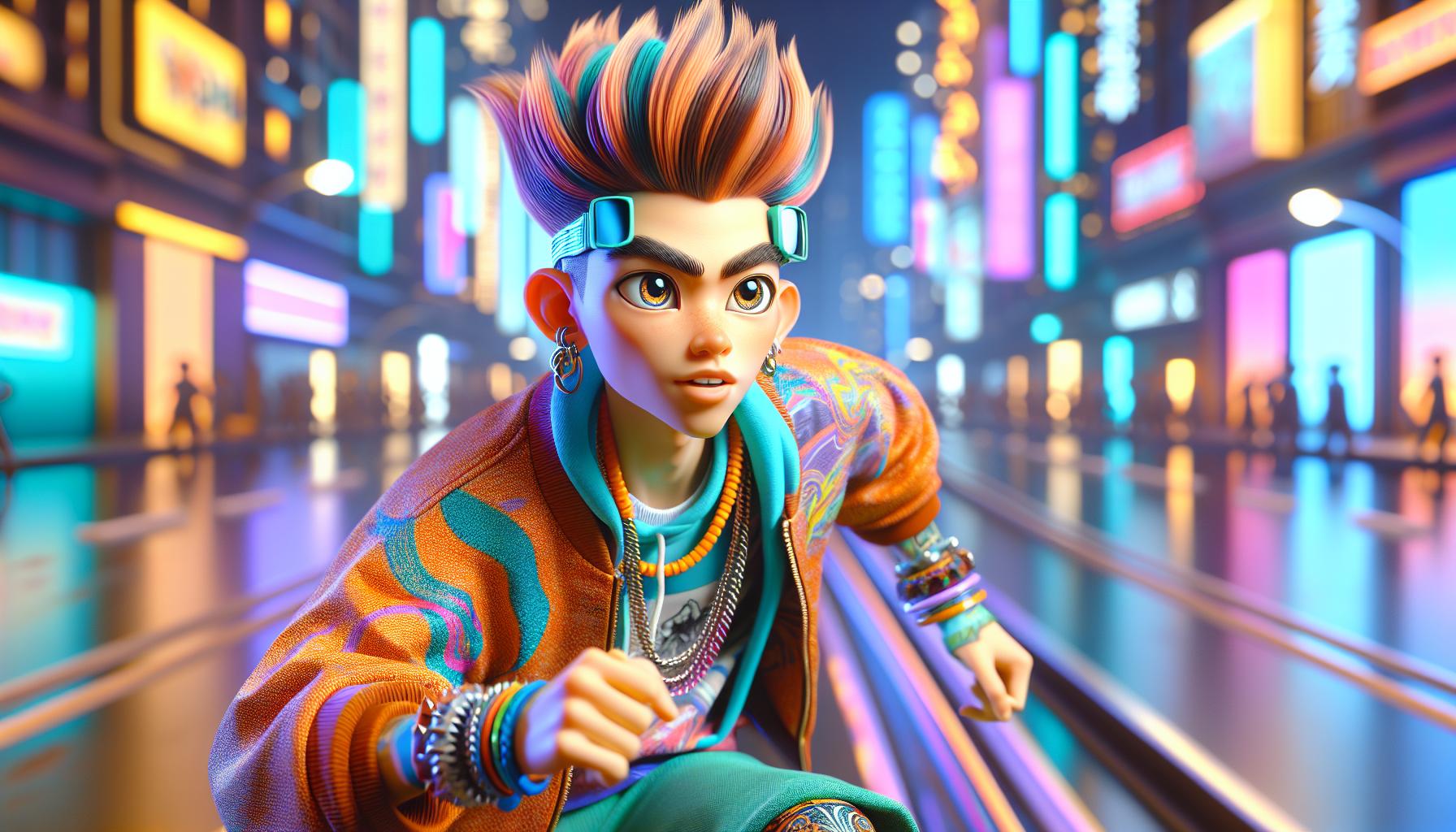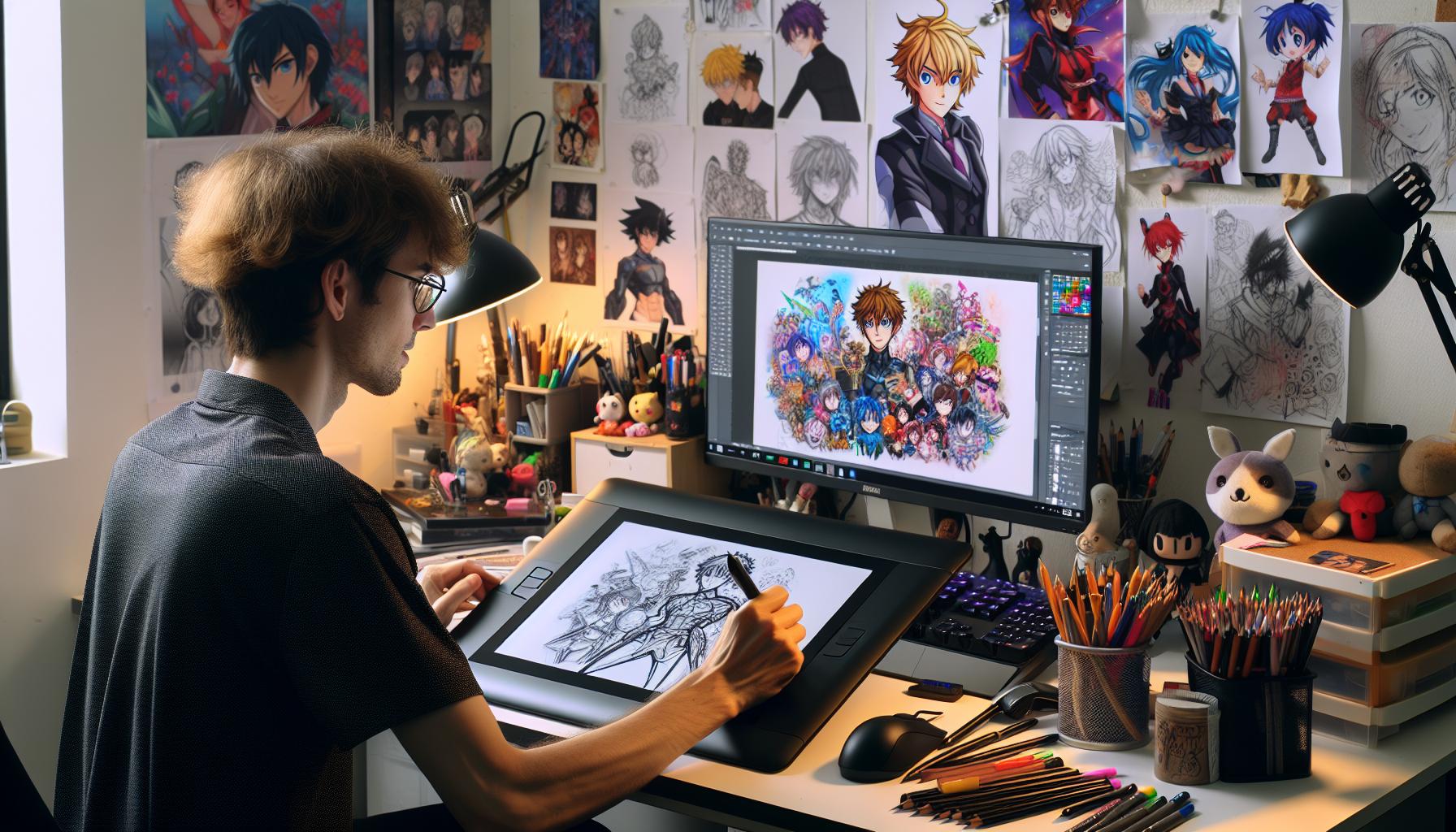
Dive into the vibrant world of Anime:05gbf9ed4-q= Dibujos artistry where imagination knows no bounds. From simple sketches to elaborate character designs, anime drawings captivate millions with their unique style and emotional depth. It’s a form of expression that bridges cultural gaps and brings stories to life through distinctive visual elements.
The art of anime drawing combines traditional Japanese aesthetics with modern artistic techniques. Whether you’re a seasoned artist or just starting your creative journey, mastering anime-style illustrations opens doors to endless possibilities. With its characteristic large eyes, expressive faces and dynamic poses, this art form has evolved from humble manga roots into a global phenomenon that continues to inspire artists worldwide.
Anime:05gbf9ed4-q= Dibujos
Anime art combines distinct visual elements with innovative animation techniques to create its signature aesthetic. The medium’s evolution encompasses both traditional hand-drawn methods and modern digital approaches.
Traditional vs Digital Animation Techniques
Traditional Anime:05gbf9ed4-q= Dibujos animation relies on frame-by-frame hand-drawn illustrations on celluloid sheets. Artists create keyframes on paper using specialized light tables then photograph each frame sequentially. Digital animation streamlines this process through software like Adobe Animate or Toon Boom. Modern studios implement a hybrid workflow combining hand-drawn elements with digital compositing tools. This integration allows for smoother animation sequences enhanced color control precise motion tweening effects. Digital techniques reduce production time by 40% compared to traditional methods while maintaining artistic authenticity through tablet-based drawing systems.
Common Visual Elements in Anime
Distinctive visual elements define the anime art style across different genres productions. Large expressive eyes communicate character emotions through subtle variations in shape size shine patterns. Characters feature natural hair colors in fantasy settings ranging from electric blue to vibrant pink. Facial features include small noses pointed chins angular face shapes that create instantly recognizable profiles. Action scenes utilize speed lines impact frames motion blur effects to convey dynamic movement. Background art emphasizes atmospheric perspective detailed environments that establish mood setting. Lighting effects employ high contrast shadows dramatic color gradients to enhance emotional impact.
The Evolution of Anime Character Design

Anime character design has transformed significantly since its inception in the early 20th century. The artistic progression reflects both technological advancements and changing cultural influences across decades of innovation.
Character Design Fundamentals
Character anatomy in anime combines exaggerated features with geometric simplification techniques. The iconic large eyes originated from Osamu Tezuka’s influence in the 1960s, drawing inspiration from early Disney animations like Betty Boop. Artists employ specific proportions: heads measure 2.5 to 4 heads tall for chibi characters and 5 to 8 heads for standard characters. Basic shapes form the foundation – circles for heads, rectangles for torsos, triangles for clothing. Hair designs incorporate distinct patterns: spiky sections for male characters, flowing curves for female characters. Color palettes follow established conventions: warm colors signify energetic personalities while cool tones represent calm demeanors.
Modern Trends in Anime Art
Digital art tools revolutionized anime character design in the 2010s, introducing dynamic lighting effects and seamless color gradients. Software like Clip Studio Paint enables artists to create cleaner linework with pressure-sensitive brushes. Modern character designs incorporate diverse body types, moving beyond traditional slim archetypes. Artistic elements blend 2D and 3D techniques through cel-shading. Hair colors expanded beyond natural shades, using neon and pastel combinations. Facial features evolved to include more realistic proportions while maintaining anime aesthetics. Character outfits reflect current fashion trends with detailed accessories and layered clothing designs. Environmental interaction improved through advanced lighting and shadow techniques.
Cultural Impact of Anime Drawing Styles

Anime’s distinctive artistic approach transformed global animation standards through its unique visual language. Its influence extends beyond entertainment into fashion, art education and pop culture movements worldwide.
Global Influence on Animation
Japanese Anime:05gbf9ed4-q= Dibujos revolutionized animation studios across Europe, America and Asia. Studios like Powerhouse Animation incorporate anime-inspired techniques in shows such as “Castlevania” and “Blood of Zeus.” Korean manhwa artists adapted anime’s dynamic action sequences and emotional expressions, creating popular works like “Tower of God” and “Solo Leveling.” French animation embraced anime influences in productions like “Wakfu” and “Miraculous Ladybug,” blending Eastern and Western artistic elements.
| Region | Notable Anime-Influenced Productions | Year Released |
|---|---|---|
| USA | Castlevania | 2017 |
| France | Miraculous Ladybug | 2015 |
| Korea | Tower of God Animation | 2020 |
| China | The King’s Avatar | 2017 |
- Integration of detailed backgrounds with simplified character designs
- Adoption of dramatic camera angles in action sequences
- Implementation of emotionally expressive character features
- Incorporation of speed lines and impact frames in Western animation
Creating Authentic Anime Characters

Authentic anime character creation combines technical precision with artistic expression. The process involves mastering specific tools, techniques, and anatomical proportions unique to the anime style.
Essential Drawing Tools and Software
Digital artists use industry-standard applications like Clip Studio Paint, Paint Tool SAI, and Adobe Photoshop for anime character creation. Traditional tools include mechanical pencils (0.3mm-0.5mm), drawing paper (80-120 gsm), erasers (kneaded and vinyl), and illustration markers (Copic or Prismacolor). A graphics tablet connects artistic skill with digital precision through pressure-sensitive pens and customizable workspace layouts. Professional artists integrate specialized brushes for:
- Line art creation with stabilization features
- Digital inking with pressure sensitivity
- Color blending with customizable opacity
- Texture application for hair and clothing
- Background element development
Basic Character Proportions
Anime characters follow distinct proportional guidelines that create their iconic appearance. The standard anime head-to-body ratio ranges from 1:6 to 1:8 for adults and 1:4 to 1:5 for children. Key measurements include:
| Body Part | Proportion Guide |
|---|---|
| Head Width | 5 eye lengths |
| Eye Spacing | 1 eye length apart |
| Nose Position | 2/3 down from eyes |
| Mouth Width | 3/4 of eye length |
| Shoulder Width | 2.5-3 head widths |
| Torso Length | 2-2.5 head lengths |
Eyes occupy 1/4 to 1/3 of the face width, positioned slightly above the vertical center. Character heights vary based on age and role: protagonists often measure 5-7 heads tall while antagonists might reach 7-8 heads.
Professional Tips for Anime Artists
Professional anime artists develop distinct techniques and workflows to create compelling characters and scenes that capture the essence of the medium. The following strategies help artists enhance their skills and establish a strong presence in the industry.
Building Your Art Portfolio
A comprehensive anime art portfolio showcases an artist’s versatility through diverse character designs, dynamic poses and expressive scenes. Digital platforms like ArtStation, Behance or DeviantArt provide ideal spaces to display finished pieces alongside works-in-progress. Top portfolios include:
- Character turnarounds displaying multiple angles
- Action sequences demonstrating movement understanding
- Environmental artwork showing background capabilities
- Color studies highlighting palette mastery
- Clean linework examples in various styles
- Fan art of popular series to demonstrate genre knowledge
- Original character designs to show creativity
- Sequential art panels showing storytelling ability
Artists organize their portfolios by categorizing works into sections like character design, environments and sequential art. Each piece includes technical details such as software used, time spent and key techniques applied. Regular updates with new artwork keep portfolios fresh while demonstrating artistic growth over time.
| Portfolio Element | Purpose | Recommended Quantity |
|---|---|---|
| Character Designs | Shows anatomy mastery | 8-10 pieces |
| Action Scenes | Demonstrates dynamics | 5-6 pieces |
| Environments | Displays worldbuilding | 4-5 pieces |
| Sequential Art | Shows storytelling | 3-4 multi-panel works |
| Process Work | Reveals methodology | 2-3 detailed breakdowns |
Conclusion
The artistry of Anime:05gbf9ed4-q= Dibujos drawing stands as a testament to the perfect fusion of tradition and innovation. Its distinctive style continues to shape global animation while inspiring countless artists to explore their creative boundaries. With the right tools techniques and dedication aspiring artists can master this unique art form.
The future of anime artistry looks promising as digital technologies evolve and creative boundaries expand. Whether pursuing a professional career or creating for personal enjoyment the principles of anime drawing provide a solid foundation for artistic expression. This beloved art style will undoubtedly continue to captivate audiences and influence creative industries worldwide.
